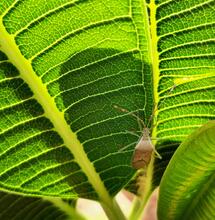Plant Relatives of Cannabis

The cannabis plant is often classified into three distinct species: Cannabis sativa, Cannabis indica, and Cannabis ruderalis. The word Cannabis designates the plant family that Cannabis belongs to, while the second word represents the specific plant species (Sativa, Indica, ruderalis).
Some other fruiting plants like apples, strawberries, plums, figs, and almonds are distant genetic relatives of Cannabis; however, here, we will focus on relatives within the Cannabaceae Family, which consists of 11 genera and several hundred subspecies.
Hemp is the plant we would expect most people to guess was a relative of marijuana. It is a subspecies of the C. sativa species known for its high CBD content. The 2018 Farm Bill made it federally legal to grow industrial hemp. To stay within the law, hemp cultivated in the United States must contain less than 0.3% THC.
Whilst Cannabis can belong to the indica, sativa, or ruderalis subspecies. Hemp belongs strictly belongs to the Cannabis sativa species.
There are several key differences between the plants. Hemp has skinny leaves, whereas Cannabis has broad leaves, dense buds, and is much ‘bushier’.
The hemp plant also has thicker fibres in its stalk, which are processed into different resources like food, fuel, and paper. Hemp is excellent at sucking up carbon dioxide from the air and improving soil quality by absorbing toxins from the ground.
2 – Hackberry
This deciduous tree is part of the Cannabaceae family but significantly differs from the cannabis plant. It is known for having very flexible wood, which you can use to create furniture. It also produces edible berries.
The hackberry tree is the most significant species in the Cannabaceae family and can reach a height of 100 feet! Native to North America, you can also find this tree in Eastern Europe, in countries like Serbia and Slovakia. It produces edible berries high in protein, fat, and carbohydrates.
3 – Hops
The hop plant is a semi-close relative of Cannabis and is most known for its part in beer production. Aside from this, however, it also has many medical uses, including the ability to tackle anxiety, digestive problems, and inflammation.
Hops contain alpha acids such as humulene, which is a terpenoid. Cannabis is also laden with terpenes, including beta-humulene and alpha-pinene. Both of these are also present in the hop plant! Hops and Cannabis do have some physical similarities. Cannabis is, however, a botanical herb, whereas the hop plant is a climbing plant.
4 – Blue Sandalwood
This is a tree which grows in China that is another cousin of the cannabis plant. In China, the tree is known as Qing Tan used for timber materials and paper. Traditional Chinese medicine practices have been known to use oil extracted from the seeds to combat colds or the flu.
5 – Trema Orientalis
Trema orientalis is also known as the Indian charcoal tree. It is an evergreen tree in the Cannabaceae family. Native to Asia and South Africa the tree produces black fruits and leaves, which are safe to eat. Trema orientalis, like the hemp plant, can improve soil quality by acting as a bio-accumulator and sucking toxins out of the ground.
Going through the plants associated with Cannabis makes you realize how unique this plant truly is. Along with the five mentioned above,
Looking further down the ITIS classification system, you will see that the Cannabaceae family is part of the Urticales order. The Urticales order includes the elm, mulberry, and nettle plants. Therefore, Cannabis is also related to them. However, it is more of a distant connection.







